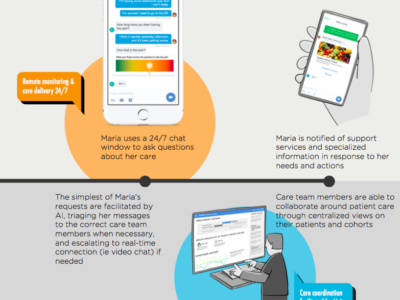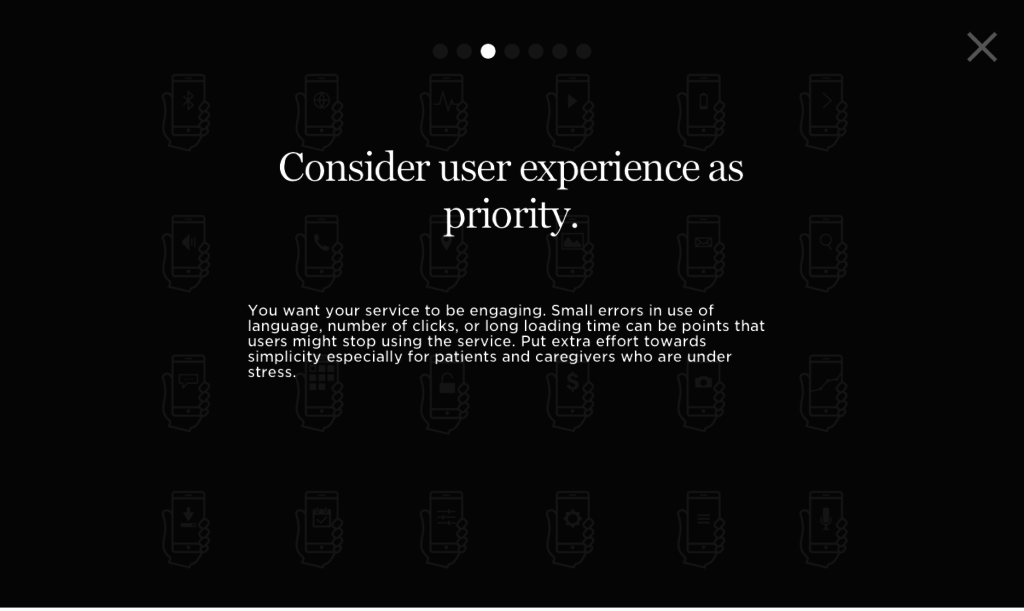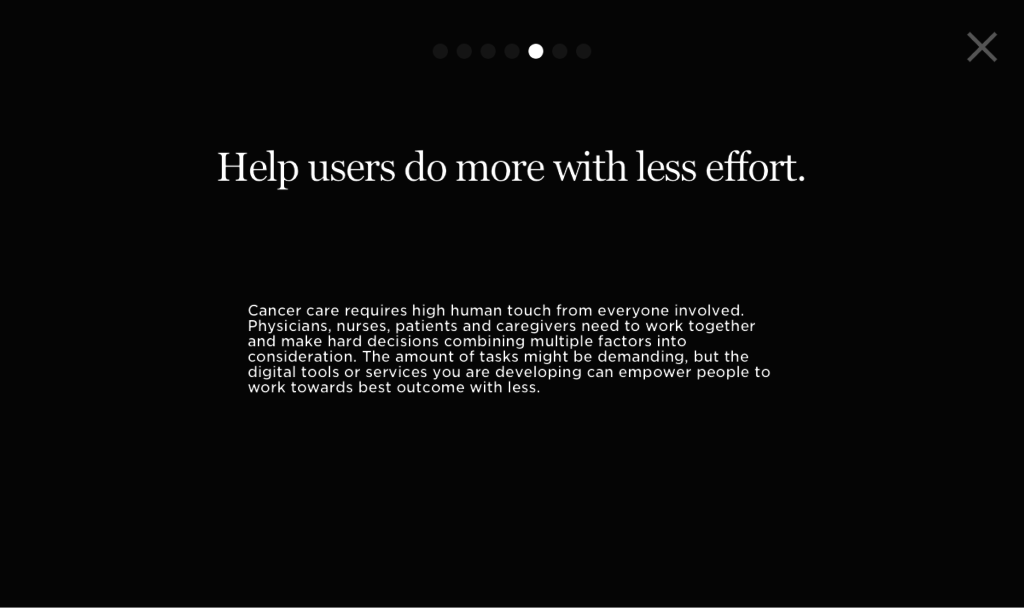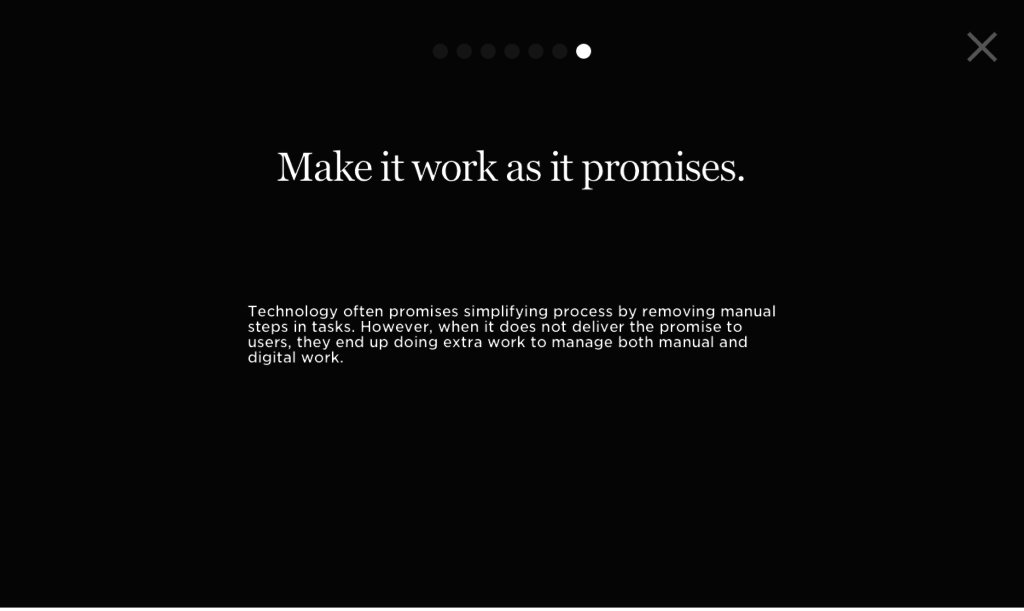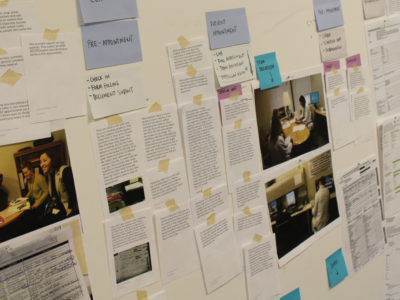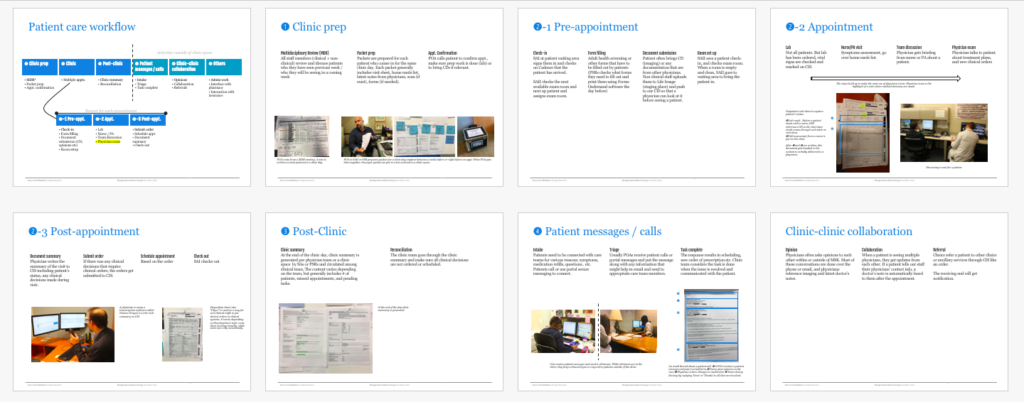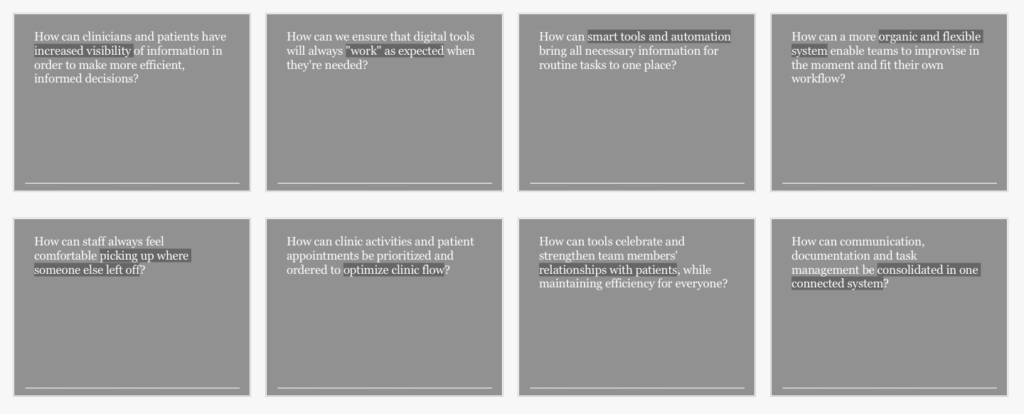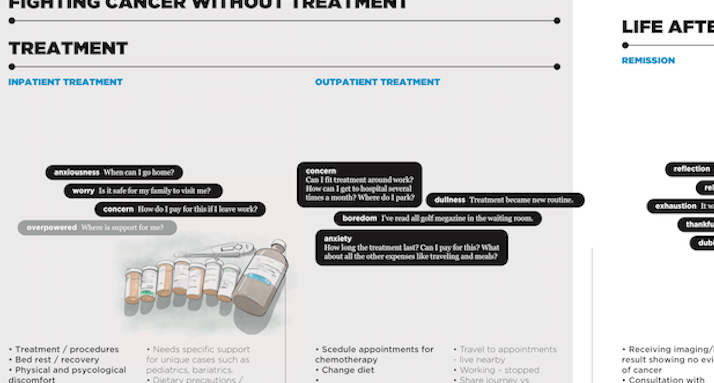in collaboration with teams institution wide
Care Transformation Vision
“Be bold.” was the guideline that was give to me when I met José Baselga, chief medical officer at Sloan Kettering with the proposal of digital strategy project. To stay truth to this ask, we focused on the future – where society, medicine and technology are heading to rather than what are current efforts that are happening within the institution. Prevailing consumer technology and artificial intelligence, rising power of consumers, healthcare reform, advancement in cancer research are all pushing cancer care center to think of new ways to deliver cancer care in digital ara, and cancer care will be different experience in 10 years.

^ As part of the final deliverables, the team have suggested three digital service concepts that can strategically move MSK from where we are now to where we want to head to in 10 years. Service concepts ware described as future scenario (a story of a patient and her journey) so that the human experience design can lead the development of our future.
Trend based collective intelligence
We started our discussion with 5 possible future stories that have components of upcoming trends in technology, society and medicine. Through a workshop with colleagues from across the institution, we discussed possibilities, pitfalls and excitement to refine future scenarios.

^ Building scenarios based on trends: To foresee more probable and relevant future experience, the team has gathered trends in healthcare, technology and society that are relevant to cancer care and pictured future scenarios; Combine “high demand of oncologists” (healthcare) + “aging population” (society) + “drone” (technology) = what future scenario can you draw?

^ Supporting organizational goals: Design team made sure that the scenarios we brought to the workshop maps well with the growth strategy of the institution.
Additional Research
We have looked at other cancer institutions and their digital tools (patient portals) against the lens of functionalities. In parallel, we have looked at other digital services outside of healthcare to benchmark user experience.
- How are other hospitals utilizing digital touch points in their care?
- What are other examples outside of healthcare that engage their customers a way that we aspire?
- What do we learn from examples in and out of healthcare?

![]()
^ Competitive Analysis: Analyzed 6 patient portals (3 top hospital enterprise solutions, 2 cancer care focused solutions and 1 homegrown portal) as well as digital service experience outside of healthcare that materialized and delivered the experience that we desire through our digital patient care.
Additionally, technology team analyzed current technology infrastructure and the gap between current capability and our desired future.
Final Concepts & Recommendations

^ Strategic services: Analyzing trends, related internal initiatives, our team suggested 3 strategic digital services that can transform patient care at MSK across all patient journey from prevention and wellness period to during cancer treatment to survivorship.


^ Future scenarios: (Sample) Digital service can connect disconnected parties through digital and provide values for every connected party. The scenarios were put together to juxtaposed experience and benefits of patients and the institution, along with evidence (trends, related projects), capabilities to build, return on experience and challenges.
- Workshop (vision, ideation) – competitive analysis – SME interviews – Analysis & concepts – Final deliverable
ROLE
- led the project from planning to delivering final report
CHALLENGE
- learning complex hospital system in a short period of time
RESULT
- The final suggestions were well received by senior management at Memorial Sloan Kettering Cancer Center
- Two of the three suggested services are being developed into new capabilities and offerings at the institution.
